There are three main things that affect the quality and health of your lawn: the weather, the soil, and good lawn care. That last one is the easiest to control, so it’s the one to focus your energies on if you want a lush, green lawn. The following simple lawn care basics will help you grow and maintain a greener lawn that you can enjoy all season long.
Watering

Water your lawn deeply but infrequently — about once per week is sufficient in most cases. Adjust your watering schedule as needed for changes in weather: more often in dryer, hotter weather; less often during cool, rainy weather. After you’ve given your lawn a deep watering, wait to see signs of drought stress (grass color changing from green to blue-gray, wilting, footprints remaining) before watering again. This encourages roots to grow deeper in search of moisture.
For the most efficient watering, water during early morning hours (before 10am). When you water during this cooler time of day, your lawn loses less moisture to evaporation from the sun and the heat of the day. Night watering is best avoided, as it can make grass more susceptible to fungal diseases, since the grass blades remain damp overnight.
In general, lawns need between 1-2 inches of water each week. Ensure even coverage by arranging sprinkler heads so their coverage areas overlap slightly. Keep sprinklers unclogged and well-maintained. If you notice a fine mist or fog when you water, lower your sprinkler system’s pressure.
Mowing
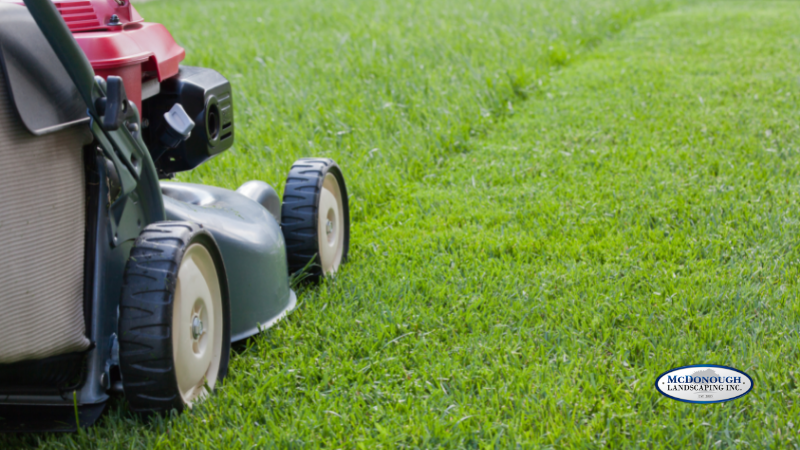
Regular mowing is an important part of lawn care. Aside from keeping your lawn from becoming an overgrown jungle, cutting your grass stimulates growth and increases thickness, leading to a healthier, lusher lawn.
In general, the taller the grass, the healthier your lawn will be (as long as you keep it under 5 inches). Most grasses thrive at a height of 3-4 inches. This is because as your grass grows, so do its roots. Keeping your grass on the longer side will ensure deeper, stronger roots, making your lawn more drought- and disease-resistant. When mowing, keep the “one-third rule” in mind: Never remove more than one-third of the height of your grass in one mowing.
The best time to mow is when your lawn is perfectly dry. The grass blades will cut much cleaner and you won’t have to deal with clumps of grass clippings clinging to your shoes and mower wheels. Vary your mowing pattern to keep wheels from running over the same areas every time, causing bald spots and weakening your grass.
Also, don’t forget to keep your mower blades sharp. Dull blades result in tearing your grass rather than cutting it, leaving frayed ends that brown quickly. Ideally, you should have your blades sharpened once per year.
Aerating
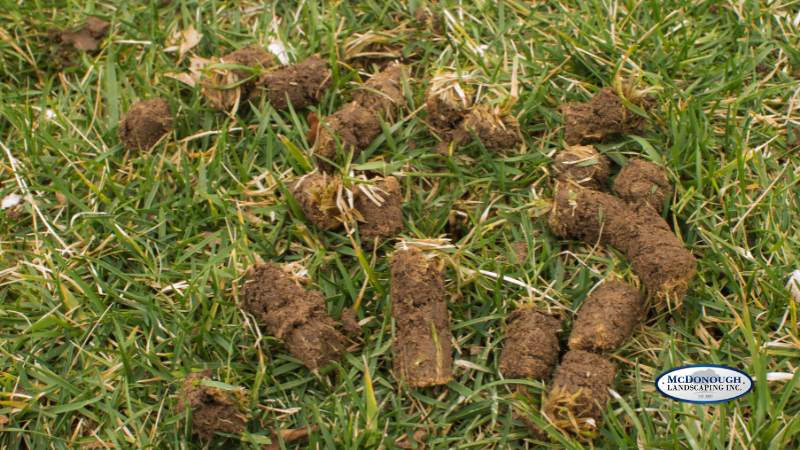
Aerating your lawn helps reduce compaction, make root development easier, and break down thatch (a layer of dead grass that builds up on the surface of the soil). Thatch isn’t easily visible, and if allowed to grow too thick, it can be one of the causes of a brown, patchy lawn. As it builds up, it prevents nutrients, moisture, and oxygen from reaching the soil. Aerating your lawn helps break up the thatch and compacted soil, encouraging roots to grow stronger and deeper.
Aeration should be done at the beginning of the growing season. Use either a spike aerator or a plug aerator to create holes in your lawn while it’s still moist from watering. The “plugs” that you pull out of the soil can be left on the grass and broken up with a mower or rake once they’ve dried out.
Fertilizing
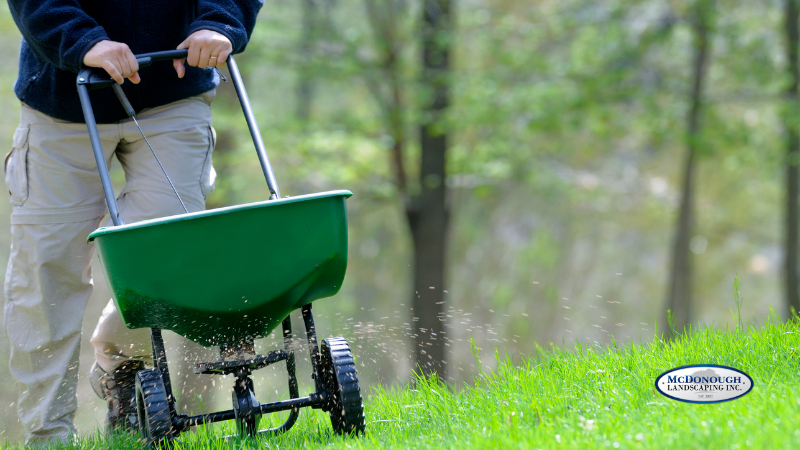
Fertilizing your grass is an essential part of maintaining your lawn, adding nutrients that help it grow lush and green. Test your soil’s PH level every few years in early spring to determine what nutrients it needs. Then replenish those nutrients with the proper fertilizer. Choose a high-quality grass fertilizer and be sure to follow the directions on the label. Slow-release fertilizers are best, as they extend the feeding time and are less likely to burn your grass than others.
In our northern climate, it’s best to fertilize in late summer or fall. After slowing its growth during the heat of summer, grass begins to grow again in the fall, and nutrients are stored in the roots for winter. Consult this helpful lawn care calendar from the U of M to learn the best times to fertilize, aerate, seed, and more.
Looking for a more organic way to add nutrients to your lawn? The best way to do this is to simply leave clippings on your lawn after mowing (as long as you’ve only cut off an inch or two of your grass). Allowing your clippings to break down on your lawn will add nitrogen and organic material to it as well as help maintain biological activity in the soil. Grass clippings will break down quickly on their own, or you can mulch them.
Seeding
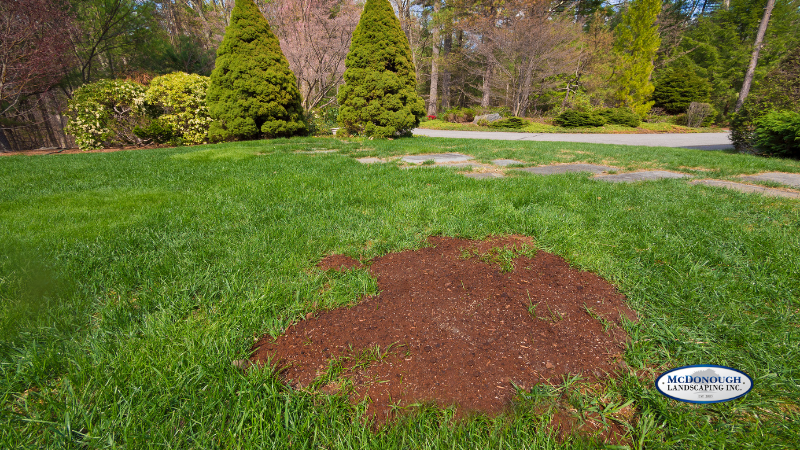
Seed bare areas of your lawn by using a rake to rough up the soil, adding a little compost or topsoil, and sprinkling grass seeds by hand. Tamp seeds down gently with your shoe, then water the area well.
Newly seeded grass needs to be watered more often than the rest of your lawn — at least twice per day. Once seeds germinate, reduce watering to once per day, continuing that schedule until the new grass has been mowed twice. Then proceed with your regular lawn watering schedule. Wait to mow new grass until it is between 3-3.5 inches long to give it a chance to establish roots.
When choosing grass seed for your lawn, look for a high purity percentage on the label. Low-quality seed can contain weed and crop seed from other plants, so finding a high-quality seed is vital to growing a healthy green lawn.
Raking
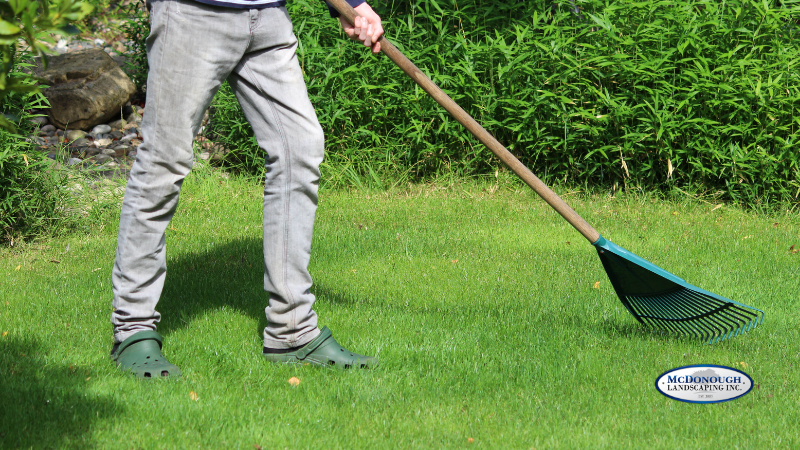
Too many grass clippings left on your lawn can smother the grass; the same is true for leaves left too long in the fall. Adding raking to your regular lawn care maintenance schedule will help keep your lawn healthy.
For matted grass clippings, use a metal-toothed thatch rake to loosen it up. This allows air, water, and nutrients to better reach the soil. Rake from multiple directions, and once finished, mow the area with mower wheels set one setting lower than usual. This allows the mower to suck up the dead, loose turf.
For leaves, mow first, then rake: It’s easier to rake broken-up leaves than whole ones. With a lightweight rake, pull leaves toward you in small motions to reduce dust. Rake onto a tarp for easy cleanup.
Taking the time to properly maintain your lawn with these simple lawn care basics will result in a greener, lusher lawn for you and your family to enjoy all summer.
